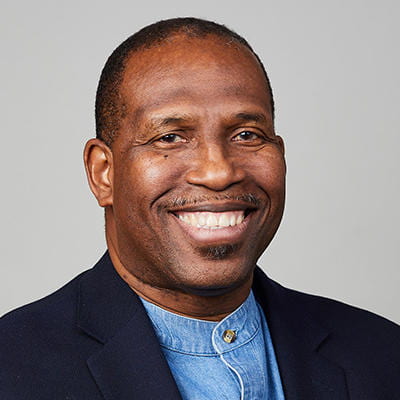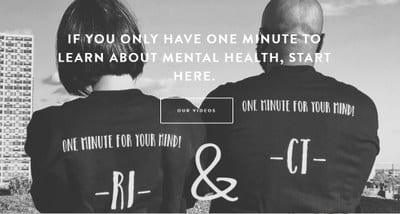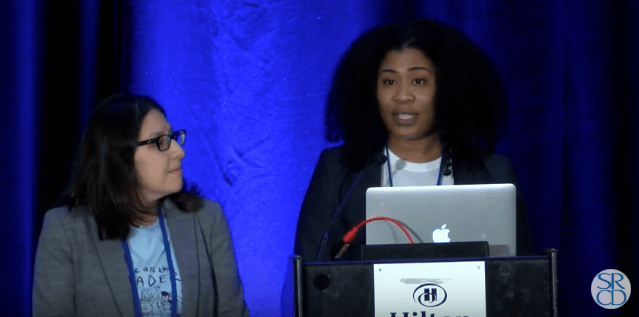Hot Topics
How Racial Discrimination Impact Black Adolescents’ Emotional Well-Being
The mental health challenges faced by Black adolescents are deeply influenced by their experiences with racial discrimination. Summers-Gabr and colleagues (2023) sheds light on how these discriminatory experiences impact emotional development, revealing negative trends in mental health outcomes. The study found significant relationships between discrimination and adolescent had faced and mental health outcomes, specifically higher levels of anxiety, depression and suicidal thoughts. One particularly striking result was how anticipated racial discrimination influenced emotional well-being. Black adolescents who expected to face more discrimination in the future reported significantly higher levels of suicidal ideation and reduced prosocial behaviors. This underscores the long-term mental health impacts in a society where discrimination is pervasive. Compared to other racial groups, Black youth consistently face greater exposure to discrimination and its detrimental effect on mental health. Summer-Gabr (2023) highlights the urgent need for intervention to address these disparities. Moreover, the findings suggest that environments where Black youth are not the largest minority group, and longitudinal studies could offer new insights into how discrimination shapes emotional and social development over time. Addressing racial discrimination is essential for fostering better mental health and emotional outcomes for Black adolescents. Future research on this topic can also help identify protective factors and effective strategies to build resilience in youth.
For more details, see full study here.

The impact of Friendship on Adolescents’ Racial and Ethnic Identity
The role of friendship is a key factor in shaping how adolescents understand their racial and ethnic identities. In fact, the diversity of schools and friendships can significantly influence the way teens explore and develop their ethnic-racial identity (ERI), their sense of self connected to their race and ethnicity (Lorenzo et al., 2024). Adolescents having diverse friends and attending schools with students from different backgrounds can create a supportive environment for exploring identity. On the contrary, being in a predominantly homogeneous setting can limit this growth, potentially impacting social and emotional well-being. Lorenzo and colleagues (2024) followed students over time, examining how diverse friendships and schools affected their ERI. The key findings suggest:
- Teens with more racially and ethnically diverse friend groups were more likely to explore and develop their ERI.
- Students in racially diverse schools tended to maintain diverse friendships over time, strengthening their opportunities for identity exploration.
- Racial minority students in less diverse schools often faced challenges that could hinder their ERI development, showing the importance of inclusive environments.
Lorenzo and colleagues (2024) highlight the value of diversity in schools and amongst friendships, and how it can lead to positive outcomes for non-white youth exploring their ethnic racial identity. These diverse settings can provide opportunities to develop a positive racial and ethnic identity, supporting overall growth.
For more details, see full study here.

Incorporating the Youth’s Voices in Psychological Research
Youth Participatory Action Research (YPAR) has been a methodology increasing over time due to its ability to directly incorporate the voices of youth and firsthand experiences. The APA’s Children, Youth, and Families Office Youth Advisory Board takes example of including youth in the research of further understanding how youth think about racial-ethnic socialization (RES) or the process of how children learn about race and ethnicity. Learning about RES may include direct messages about race and learning about their racial-ethnic identity through messages, media exposure, practice and awareness. Through the conversations and discussions held with the adolescents (ages 13 to 19), the Youth Advisory Board compiled key takeaways from the voices of the youth and their relationship with their racial-ethnic identity.
- Youth’s RES minimizes the impact of racial stress and improving coping strategies to racial experiences
- Youth have reported that their experience with RES helps shape their racial-ethnic identity.
Read here learn more about the RESilience initiative.

What We’re Reading: Cultural Socialization and Academic Performance
-
Saleem et al. (2022) explores how schools can influence the well-being of African American and Latinx adolescents. The researchers examine how schools’ messages about race can buffer the negative effects of race-related stress on students’ academic performance. The researchers found that color-blind messages in schools worsened the effects of race-related stress on academic performance for both African American and Latinx adolescents (Saleem et al., 2022). They also found that schools that deliver messages that acknowledge race and ethnicity (cultural relevance) may help buffer the negative impacts of race-related stress on academic achievement (Saleem et al., 2022). This research sheds light on how schools can create a more supportive environment for African American and Latinx students. By moving away from colorblind approaches and instead acknowledging and celebrating students’ racial backgrounds, schools can help mitigate the negative effects of race-related stress on academic achievement. To see more details of the study, read here.
-
Wang et al. (2022) explores how families help young children from minority ethnic/racial backgrounds navigate diverse school and neighborhood environments. The study found that families engage in more cultural socialization – teaching children about their heritage – when the children are in schools and neighborhoods with a lot of diversity (Wang et al., 2022). Interestingly, this cultural socialization was most helpful for the children’s social development when they were in those diverse settings with few children from their own background. In other words, focusing on cultural heritage can be a valuable tool for children navigating situations where they are a minority. The research is significant because it sheds light on ways in which children can be successful in diverse environments. By emphasizing their cultural heritage, families can provide children with a strong sense of identity and belonging. To see more details of the study, read here.
Celebrating Hispanic Heritage Month
In celebration of Hispanic Heritage History Month, we would like to highlight Latinx folks who making an impact of on the research community and world:
- Prisca Dorcas Mojica Rodríguez is a Nicaraguan American activist and book author. Her mission is to disseminate knowledge and information that is often exclusive to university courses. She created the Latina Rebels, a digital platform that helps with this mission. The online space opens up discussions and shares information on the multitude of issues around sexism, racism, and classism, specifically as it relates to black and brown females. Another work of Rodríguez’s is the book, For Brown Girls With Sharp Edges and Tender Hearts, which details some of her own real-life experiences to foster teachings concerning concepts on decoloniality, colorism, and more. Her hope is that the book empowers and helps women of color gain knowledge and tools to strive in a society that often makes such things inaccessible. Rodríguez continues to write and give talks advocating, spreading information, and discussing the experiences of Latinx communities. To learn more about Prisca, you can visit her website here.
- Dr. Melawhy Garcia was recently awarded an Hispanic Serving Institute (HSI) collaboration award to support her project called the Leveraging Interdisciplinary Nutritional Knowledge (LINK) program. The LINK program aims to support undergraduate and graduate students of color who are interested in pursuing a degree in nutritional sciences, kinesiology or public health sciences. It is important for scholars of color to have a support system in order to increase representation in the social sciences world. Currently, Dr. Garcia is the assistant professor of health science and is the director of the Center for Latino Community Health, Evaluation, and Leadership Training at California State University – Long Branch. Before pursuing her MPH and doctorate, she was a psychology undergraduate student. More information about her work in health disparities and community-based research can be found here.
Congratulations to all of the Latinx folks featured here for their accomplishment!
Opportunity hoarding linked to racial and ethnic inequities in children’s neighborhoods
A study done by Acevedo-Garcia et al. (2020) draws attention to the disparities seen in metropolitan neighborhoods across America concerning the opportunities afforded to children residing in them. The researchers were able to find the amount of opportunity a city has by averaging the Child Opportunity Scores (COI), a comprehensive analysis of relevant neighborhood characteristics, of all the neighborhoods within it. The COI of a city can range from 1, being the lowest opportunity, to 100, being the highest opportunity. Acevedo-Garcia et al. also measured the difference in opportunity between a city’s highest and lowest opportunity neighborhoods to find the Child Opportunity Gap.
Cities that have a Child Opportunity Gap of 80 points or larger are referred to as hoarding metros. In such areas, the children in the highest opportunity neighborhoods experience an abundance of resources to flourish while those in low opportunity neighborhoods are deprived of them. These disparities continue even when a hoarding metro’s opportunity improves, the low opportunity neighborhoods see little of this increase. The pattern observed by the researchers impacts Hispanic and Black children to a far greater extent than White children in hoarding metros. It is important to find solutions due to the negative impacts the lack of opportunity has on a child’s well-being and development. Studying sharing metros, cities with smaller gaps between the lowest and highest opportunity neighborhoods, is a start. These areas offer insight into what policies and actions can help eliminate the inequalities caused by a history of segregation and institutional racism.
Frank C. Worrell, Ph.D.: President-Elect of the American Psychological Association
Dr. Frank C. Worrell was recently elected the 2022 president of the American Psychological Association (APA). He will be the fifth Black president of the organization. It is important for accomplished Black figures to hold positions of power in their field, as it is an important step in the process of dismantling systemic racism. Currently, Worrell is a professor of School Psychology as well as an affiliate professor in the social and personality area in the Department of Psychology at UC Berkeley.
Young, Gifted, and Black: Highlighting Black Youth and Young Adults that are Making an Impact
In celebration of Black History Month, we would like to highlight Black youth and young adults that are making an impact in their communities and the world:
- Tony Weaver Jr. is a 23-year-old founder of Weird Enough Productions, an ed-tech company whose goal is to combat media misrepresentation of minorities through original content production and media literacy education. After working with minorities at Elon University, Weaver learned about the troubling effects that media misrepresentation can have on minority groups, such as harsher jail sentences and poorer medical services. Therefore, with the mission of changing the media narrative of minorities, he founded Weird Enough Productions at age 20. Since then, he has published 13 original short films and webcomics tackling topics like discrimination, fake news, and other unfair treatments surrounding minorities. Weaver has also been an Echoing Green, Camelback Venture, and Peace First Foundation Fellow. He was also featured in Forbes 30 under 30.
- Nyeeam Hudson is a 12-year-old author and inspirational speaker whose mission is to motivate children to stop bullying and most importantly, to build self-confidence and self-love. By offering support to victims of bullying, Nyeeam has positively impacted the lives of many children around the globe through inspiring and uplifting messages. In 2020, he published the book, We Are All Kings: A Motivational Guide for All Men, with the goal “to motivate and inspire all young men across the world and let them know that anything is possible if they just believe in themselves.” You can find and hear Nyeeam’s inspirational speeches on his Instagram.
- Zoe Oil is an 8-year-old entrepreneur who is embracing her beautiful curly hair and encouraging other young ladies to do the same. Zoe was not always confident about her curls. She once asked her mother why she didn’t have pretty straight hair like her other classmates. Her mother responded with uplifting words and actions by embracing her own natural hair and purchasing Zoe a black doll. The confidence Zoe’s mother gave her truly helped. However, she was still wondering why her doll, and many others, only had straight hair and not hair like hers. Zoe changed this and took it upon herself to launch the doll line Beautiful Curly Me. The line includes two dolls, one with curly hair and one with braids. Zoe also wrote two books, sells hair care products, and donates 10% of the proceeds to women empowerment organizations in order to spread her message of self-love and show other young girls like her how beautiful they are inside and out.
- Winter BreeAnne is leading the way in showing young individuals how they can have a voice in the issues and causes they care most about. Her activism started with the launch of Black is Lit, a platform she created where young black individuals could share their stories. She felt this was a very important outlet, especially after the shooting of Tray Marten. Winter was also greatly impacted by the Parkland school shooting, realizing that such a tragedy happened to people her age and could have happened at her school. So much so that she organized the national student walkout where 3 million students joined together against gun violence. Winter has also dedicated much of her time educating students on the electoral process and civic engagement. She is an inspiration and leader to many young individuals in the U.S.
Congratulations to all of the Black youth and young adults featured here!
“Black Parent Voices Resilience in the Face of the Two Pandemics: COVID-19 and Racism” Webinar
Iheoma U. Iruka and Stephanie M. Curenton, Co-founders of Researchers Investigating Sociocultural Equity and Race Network (RISER), will be conducting a to discuss their new report of the same namesake. This report illustrates how the global pandemic is affecting Black families’ experiences with racism and discrimination, their financial security/material hardship, mental health and wellbeing, and early care and education options.
Penn State campuses offer events in honor of Black History Month
February is Black History Month in the United States and all through this month, people observe and celebrate the achievements and history of African Americans. Black History Month evolved from “Negro History Week”, announced in 1925 by Carter G. Woodson alongside his organization, the Association for the Study of Negro Life and History, in an effort to bring attention to the contributions of African Americans throughout history1. It was first celebrated in February of 1926 to coincide with the birthdays of Abraham Lincoln and Frederick Douglass. Fifty years later, President Ford issued the first “Message on the Observance of Black History Month”2. Given all that has happened this past year, it is critically important to recognize African Americans’ immense contributions to the United States and beyond. We are proud that Penn State publicly continues this tradition.
At Penn State, Black History Month is celebrated extensively across all campuses. A series of speakers are invited to talk about the contributions of African Americans to various fields of study, issues facing African Americans throughout history, and other educational topics. There are also multiple musical performances, art exhibits, poetry readings, discussion forums, and other programs. Each Penn State campus hosts its own events, but many are virtual and all students, faculty, and staff are welcome to attend.
Some of the highlights are the Eberly College of Science virtual Chemistry Seminar Series, in which four speakers in the chemistry field will speak, and a lecture by Dayton Schroeter and Julian Arrington, the lead designers of the “Society’s Cage” installation in Washington, D.C., which is hosted by the Stuckeman School in the College of Arts and Architecture.
The Africana Research Center will host a pastoral psychotherapist and international speaker who will present a self-care workshop on “Radical Wellness.” On the musical front, the 25th Annual African American Music Festival, featuring concerts, lectures, and presentations by Penn State School of Music students and guest artists. In addition, Mwenso and The Shakes will put on a virtual funk and blues music concert followed by a live discussion with the musicians.
For those with the ambition for physical fitness, there is a challenge to walk, run, bike, swim, row, or otherwise complete 54 miles to commemorate the historic marches from Selma to Montgomery in 1965. Those who cover 54 miles by February 28 will receive a Black History Month ally pin. Penn Staters may also take part in virtual fitness classes throughout the month. In addition to learning yoga and other types of physical activity with a personal trainer, these sessions will provide information on the health inequities suffered by the Black community.
With so many different ways to celebrate Black History Month at Penn State, there are ways for everyone to participate. Here are some other events that are being held at the University Park campus:
- Feb. 4-7: 25th annual African American Music Festival will feature a variety of virtual lectures, concerts, and presentations by the School of Music ensemble and soloists.
- Feb. 11, at 7-8p: Black Graduate Student Association in collaboration with School Library will host a virtual book discussion “’The Parable of the Sower’: An Octavia E. Butler Book Discussion.” The discussion will examine themes in Butler’s novel such as inclusion/exclusion, creation/destruction/rebirth, and writing/books/scripture, as well as a larger homage to African American literary tradition.
- Feb. 12 and 14: The Penn State University Libraries Center for Black Digital Research invites the campus community to Douglass Day 2021, their annual birthday party for Frederick Douglass. The center will host a “transcribe-a-thon” with the papers of Mary Church Terrell, a foundational Black activist, educator, thinker, and writer. The event, in partnership with the Library of Congress’s crowdsourcing initiative, By the People, will feature a live-streamed program with speakers.
- Feb. 23, at 7:30p: Meeting the Moment with Michael Mwenso, featuring Anthony McGill, principal clarinetist of the New York Philharmonic.
More information on the different events held around the Penn State campuses can be found online.
Sources:
1“About African American History Month.” Library of Congress. https://africanamericanhistorymonth.gov/about/.
2“African American History Month.” Library of Congress. https://www.loc.gov/law/help/commemorative-observations/african-american.php.
Margaret Beale Spencer: Where Resilience Comes From & Unstacking The Deck-A Call for Candid Self-Interrogation About Identity
Dr. Margaret Beale Spencer joined The 180 Podcast to discuss her scientific research on human development in context. Part 1 of the podcast focuses on Dr. Spencer’s personal history and her path to her work on identity and resiliency and while part 2 of the podcast focuses on her scientific research and how to address racism.
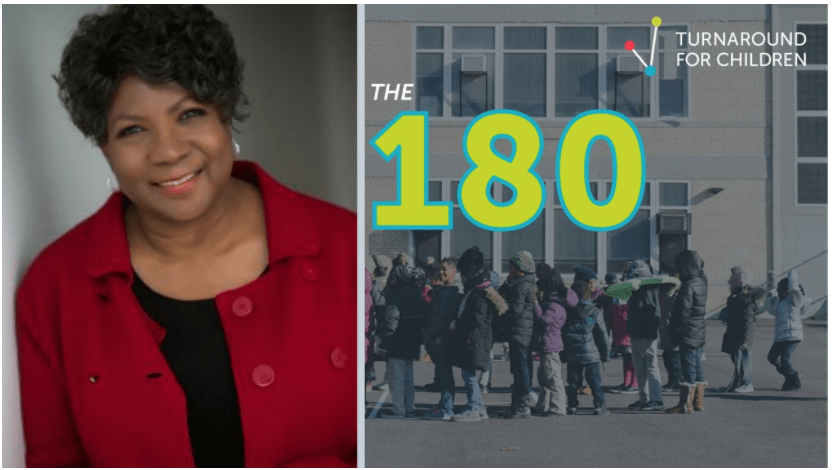
Addressing Inequalities in Education
The Society for Research in Child Development (SRCD) released a new volume addressing the academic inequities experienced by minority populations in America. Individuals who identify as American Indian and Alaska Native (AIAN), Latinx, Asian, Black, and LGBTQ+ are facing disproportional effects of COVID19 on account of preexisting adversities. The SRCD draws attention to the vulnerabilities that children and families in these marginalized groups face due to systemic discrimination. The article specifically focuses on the difficulties they endure as schools begin to reopen for in-person or remote learning. Various adversities are shared between the groups such as low income, limited access to internet connection and technology, poor health care, etc. That being said Latinx, LGBTQ+, Asian, Black, and AIAN communities are being impacted by COVID-19 in distinctive ways that need solutions unique to them. Thus, the SRCD is calling for policies and recommendations that will address the broadened inequities in the education system. Using current scientific evidence, the SRDC lists several crucial practices that policy and lawmakers should implement to provide support for marginalized youth and families. Their research indicates that with the right policies and programs, children have the chance to succeed in their academics and future.
PACT Continues To Make An Impact During Pandemic
Parents and Children Together (PACT), formed in 2007, is a partnership between Penn State researchers and residents of the greater Harrisburg community. The mission of PACT is to enhance the lives of children, youth, and families that are of racially, culturally, and economically diverse backgrounds. Most of the work PACT does involves face-to-face data collections and meetings, but the COVID-19 pandemic has forced the members to change their approach. According to Dr. Dawn Witherspoon, McCourtney Family Early Career Professor in Psychology who is the director of PACT, their community advisory board (CAB) continues to meet bi-monthly via Zoom, share resources, and connect despite social and physical distancing guidelines. Dr. Witherspoon describes the work as bidirectional as CAB helps to shape the research projects and the investigators give back by sharing the findings, conducting workshops for families, and hosting community events. A longtime member of PACT CAB, The Reverend Doctor LaVette Paige is the chief executive officer of the Martin Luther King Community Development Center. She explains that ultimately PACT wants individuals from underrepresented backgrounds to understand that they have a voice and that they are more than just subjects and who will not be taken advantage of.
The COVID-19 pandemic has caused events to be canceled such as the King Center’s annual summer enrichment program for girls but other CAB organizations are finding creative ways to cater to their audiences while also partnering with PACT for information and support. Black Girl Health which is a virtual 5k walk/run, led by Porcha Johnson, and Latino Connection, which is a COVID-19 webinar led by George Fernandez, are examples of those creative ways.
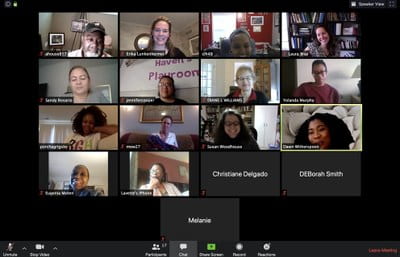
Talking to Children about Racism
As Black and Brown communities continue to be disproportionately targeted by oppressive systems, members and allies of these communities are demanding immediate change. Young children are watching this unfold and many parents are questioning whether they should discuss the recent events with their children. More importantly, they are grappling with how to teach this generation about race. Having expertise in parenting among ethnic-racial minority families, the researchers recommend an approach to racial discussions with children called “intentional parenting for equity and justice” (IPEJ). It involves deliberate conversations and meaningful activities that increase children’s awareness of racial dynamics in our country as well as urge them to resist and change those dynamics. In order for IPEJ to be considered a normative approach, adults should not avoid mentioning race to their children. White parents are more notorious for doing this as many studies show that the murders of Trayvon Martin (2012) and Michael Brown (2014) motivated Black parents to have conversations about racism and discrimination with their children while very few White parents engaged in those discussions. Not talking about race and racism with children hinders their racial progress and encourages colorblind, egalitarian ideologies. In order to dismantle systemic racism, children need to know that it exists and that it is unacceptable.
Parents need to first closely examine their own racial beliefs and attitudes in order to position themselves to teach what is most valuable to them. They should also find opportunities to talk to their children about how minoritized groups are negatively stereotyped and discriminated against while also highlighting their strengths and their culture’s positive contributions to society. By utilizing these strategies, parents can then become a part of the solution to fighting racial injustice.
Science has a Racism Problem
The editorial team at Cell Press highlights the many examples of racism in science that date all the way back to the initial explorations of human genetics. Human genetics, particularly eugenics, has served as the rationale for the concept of racial superiority. Other examples of racism in science are evident in the exploitation of Black people, from Henrietta Lack’s cells being stolen to the Tuskgee syphilis study where Black men were tested on without proper consent. The mortality and morbidity rates in the healthcare system that disproportionately affect Black individuals is also another example of racism in the scientific world.
Understanding this and recognizing that they are also part of the problem, Cell is committed to bringing about positive change through their platform. They will feature more Black and underrepresented minority authors in order to increase representation and educate the public. Additionally, they aim to improve diversity within their organization and plan to listen to any other ideas that will aid the Black scientific community. They hope these actions will be a starting point for eliminating science’s racism problem.
Mental Health Minute: Racism
In this episode of Our Mental Health Minute, Riana “Ri” Anderson and Shawn “CT” Jones discuss racism, how it manifests in society, and the emotional and behavioral consequences of experiencing it.
This is one of many brief episodes created by Ri and CT, both clinical psychologists. Their videos cover topics like how to recognize mental health problems, tips for improving well-being, what to expect in therapy, identity, and how to talk about race with children. Ri and CT have also started a podcast! Check out the Our Mental Health Minute website.
The Adultification of Black Girls
A recent article in the New York Times highlights the issue of adultification of Black girls, a phenomenon in which “teachers, law enforcement officials, and even parents view Black girls as less innocent and more adult-like than their White peers.” The article, entitled Why Won’t Society Let Black Girls Be Children? by A. Rochaun Meadows-Fernandez, draws on both personal experiences and recent research to illustrate how the tendency to adultify means that Black girls are viewed as disruptive or even malevolent for behaviors that are in fact developmentally appropriate.
A 2017 study conducted by Dr. Jamilia Blake and colleagues (Girlhood Interrupted: The Erasure of Black Girls’ Childhood) found that black girls were perceived as needing less protection, needing less support, and knowing more about adult topics than their White peers. These views in turn likely contribute to harsher discipline and fewer opportunities for Black girls across a variety of contexts, including in school, at home, and in the juvenile justice and child welfare systems. Evidence suggests that adultification of Black girls begins even before entering kindergarten, with Black girls making up a disproportionately high percentage of preschool suspensions in preschool (U.S. Department of Education, 2016). These recent reports build on previous research supporting that Black boys are viewed as more adultlike and more culpable than same-age White boys (Goff et al., 2014).
According to Dr. Blake, language matters when talking to and about Black girls, which might involve calling out other adults who use negative language to describe Black youth. She emphasizes that in addition to letting kids be kids, awareness and self-reflection are crucial first steps to overcoming these views.
Child Antisocial Behavior Is More Environmental in Origin in Disadvantaged Neighborhoods
A new study by Dr. Alexandra Burt and colleagues has found that neighborhood factors impact the importance of genetic factors in youth antisocial behavior (e.g. theft, vandalism). In disadvantaged neighborhoods, shared environmental factors had a much larger influence on youth antisocial behavior than in more advantaged neighborhoods. Genetic factors had effects on youth antisocial behavior in all neighborhood contexts, but the effects were proportionally smaller in disadvantaged neighborhoods. This study replicated previous findings in behavioral genetic research using multiple methods of neighborhood measurement. Given these findings on the role of neighborhood disadvantage in youth antisocial behavior using multiple methods, future research should investigate the ways in which neighborhood disadvantage confers risk for antisocial behavior.
You can access the article now.
An Economic Portrait of Low-Income Hispanic Families in the United States
The National Research Center on Hispanic Children & Families recently synthesized findings from their first five years of studies (2013-2018), revealing important information about the economic well-being of Hispanic families in the United States. Data from nationally representative surveys show that most low-income Hispanic children live in a household with at least one employed parent. Despite high levels of parental employment, Hispanic children live in lower-income households than their non-Hispanic peers on average, and access to employer-provided insurance is particularly low among immigrant Hispanic families. Still, public assistance utilization is low among low-income Hispanic parents for a number of reasons, including the belief that they do not need any assistance, a lack of knowledge about the programs, and immigration-related concerns. The studies also show that many low-income Hispanic parents’ jobs require irregular or nonstandard work schedules, which may limit the time that parents (particularly fathers) spend with children.
High levels of employment among Hispanic families may confer certain benefits, including stability and a steady income source. On the other hand, this synthesis of studies shows that many Hispanic families face barriers to economic mobility. The authors suggest that future research should address how information about public assistance is made accessible to parents. Furthermore, because education is a primary path toward economic mobility, future research should examine education trajectories in Hispanic populations. You can find more information and read the article online.
A Discussion of Developmental Science in the Spirit of 2044
In the year 2044, the United States is projected to become a “majority-minority” country, meaning that no racial/ethnic group will have a numerical majority. The population under age 18 will be a majority-minority even sooner, by the year 2020. With these demographic shifts taking place, developmental scholars are challenged to consider ways of conceptualizing and measuring culture, race/ethnicity, and children’s increasingly diverse developmental contexts. At the Society for Research in Child Development (SRCD) 2019 annual conference, the Racial and Ethnic Issues Committee hosted a pre-conference dedicated to discussing these demographic shifts and the implications for developmental science.
Dr. Dawn Witherspoon & Dr. Gabriela Livas Stein introduced and moderated the pre-conference panels, entitled Conceptualizing and Measuring Culture, Context, Race and Ethnicity: A Focus on Science, Ethics, and Collaboration in the Spirit of 2044.
Panel discussion: Best Practices in the Measurement and Conceptualization of Race and Ethnicity.
Panel discussion: Influence of Contextual Factors and Individual Differences: A Guided Discussion.
Panel discussion on policy and intervention implications and closing remarks.
Cultural Values and Behavior among African American and European American Children
A new study by Smith, Witherspoon, and colleagues (2019) explored collectivistic and individualistic values among African American and European American elementary school students and its relation to behavioral outcomes while analyzing the difference between race/ethnicity, grade, and gender. The study showed that collectivistic and individualistic values were found in both African American and European American children. However, African American children showed higher levels of individualism. Moreover, collectivist values were related to less delinquent problems, while more individualistic values were linked to less prosocial behavior and more conduct issues. In regards to grade level, children in higher grades possessed more collectivistic values. The research also showed that boys and girls had similar collectivistic and individualistic values. The study extends the current line of literature by studying cultural values among African American and European American children. Read the study online!
Detailed New National Maps Show How Neighborhoods Shape Children for Life
A recent nationwide study identified the specific neighborhoods in different cities across the USA where children were more likely to escape poverty. The study demonstrated that the time spent in a neighborhood as a child has an effect on adulthood success. A recent news article discussed these findings and how they will be used to redesign social programs that help those in poverty.
The study compared families of the same income level in different neighborhoods and found that the neighborhood in which the family lived, regardless of family income, was most correlated with upward mobility. The neighborhoods linked to the highest rates of upward mobility for children in poverty are labeled “Opportunity Zones”. The article also discusses research showing additional factor that affects upward mobility, even when comparing families in the same neighborhood with the same income level. Finally, the article suggested that incarceration is an important factor that distinguishes “Opportunity Zones”, showing that many young children in worse neighborhoods end up incarcerated and therefore unable to escape poverty.
The article stressed that more research needs to be done to understand the factors that make neighborhoods better or worse for upward mobility, but it emphasized that this research will already be useful for government programs that target specific areas. Access the entire article now.
Everyday Discrimination Raises Women’s Blood Pressure
A new study found a direct correlation between women who experience discrimination daily and the development of high blood pressure. Though many studies already connect recurrent discrimination and health problems, most are cross-sectional. This study differed as it aimed to link the experience of discrimination against women, or “the ways in which the dignity and the respect of people who society does not value is chipped away on a daily basis” (David Williams, Harvard University) to the development of health problems in the future. Researchers did this by asking 3,330 women between the ages of 42 and 52 how often they were discriminated against and then measured their blood pressure ten years later.
Researchers found that women who experienced routine discrimination ended up with higher blood pressure after ten years. Additionally, they found that women who experienced routine discrimination were more likely to gain weight, which is hypothesized to perpetuate a cyclical experience of discrimination and increased blood pressure. To access the entire article, read it online here.
The Relationship Of Race To Community Health
Access to healthy food, economic stability, and public safety vary between Black, Hispanic, Native American, Asian and White communities, which may be associated with enormous race- and ethnicity-based health disparities. A recent news article described a study that examined the 500 Healthiest Communities and established a clear link between communities’ racial and ethnic makeup and health.
Hidden Populations, A Special Issue On Developmental Psychology
Dr. Dawn Witherspoon, along with Dr. Mayra Y. Bámaca-Colbert (the Pennsylvania State University), Dr. Gabriela L. Stein (UNC Greensboro), and Dr. Deborah Rivas-Drake (University of Michigan), will be guest editors for a special issue on hidden populations, communities of color who are less well-represented in the developmental research literature.
Quality After-School Programs Help Students Feel More Connected
A recent study by Dr. Emilie Smith and Dr. Witherspoon and their colleagues (2017) found that high-quality afterschool programs were effective in fostering positive youth development among diverse 2nd -5th graders. Youth’s competence, feelings of connectedness, and respect towards adults increased. Also, the researchers found that staff who showed care for and interest in children impacted the growth of respect and caring from the children. It is important that children see and are engaged in positive interactions with adults, so that they may give back that same positivity. More on this study can be found online.
Parents Talking About Culture Matters For Adolescents’ Self-Views
A study by Dr. Knight and his colleagues (2017) found that Mexican families who placed greater importance of Mexican-American values were more likely to teach their youth about cultural traditions, values, beliefs, and history. Parents who taught their youth about culture had teens who had positive views about their abilities and whose ethnic identity developed. These results emphasized the role of parents in adolescents’ development of ethnic and broad self-views.
